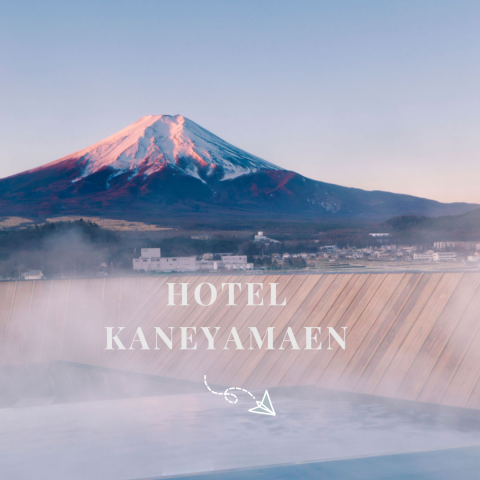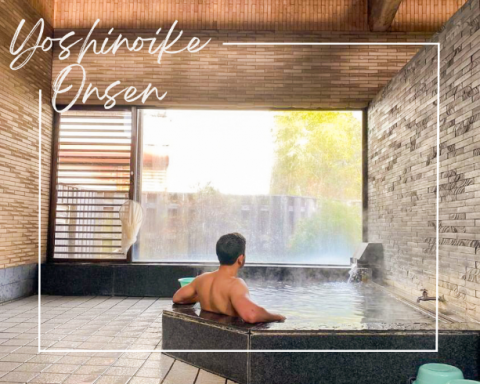Main content starts here.
This English-language text was created by Japan Tourism Agency
Daigahara-Juku Post Town
Daigahara-Juku is a post town located in Hokuto, Yamanashi, along the famed Koshu Kaido, a highway originally built to transport goods between Edo (present-day Tokyo), Koshu (present-day Yamanashi), and Shinshu (present-day Nagano). As a rest stop for travelers, Daigahara-Juku’s numerous inns flourished throughout the Edo period (1603–1867).
Today, thanks to the efforts of residents, the streets and scenery of Daigahara-Juku have been preserved. Located close to the Minami Alps, the town has convenient access to some of Yamanashi’s most treasured water sources. This makes Daigahara-Juku and surrounding areas an attractive location for drink manufacturers, breweries, and distilleries.
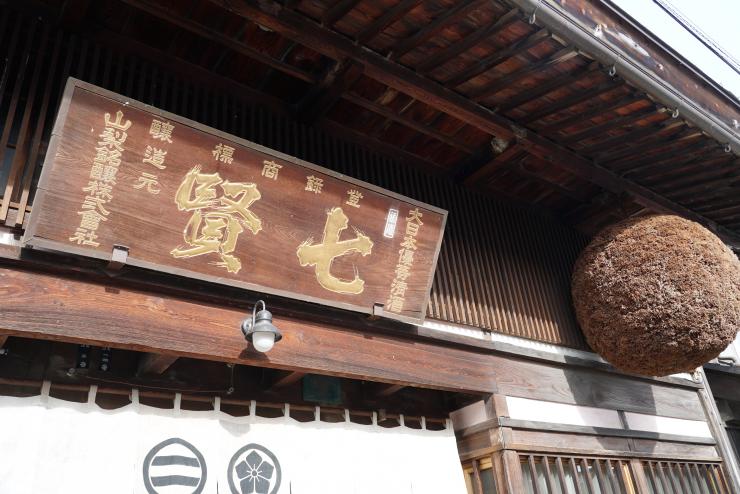
Shichiken Sake Brewery
One stalwart of Daigahara is the Shichiken Sake Brewery, founded in 1750. The brewery has been passed down from generation to generation of the Kitahara family. Sake was the alcoholic beverage of choice before the introduction of Western culture and institutions that swept through Japan in the Meiji era (1868–1912).
As brewers of some of the best sake in the country, the Kitahara family amassed great wealth and respect both within Yamanashi and throughout the country. In 1880, the Meiji emperor stayed at Shichiken for one night. The lodgings where he stayed have been turned into a museum and designated a cultural heritage site.
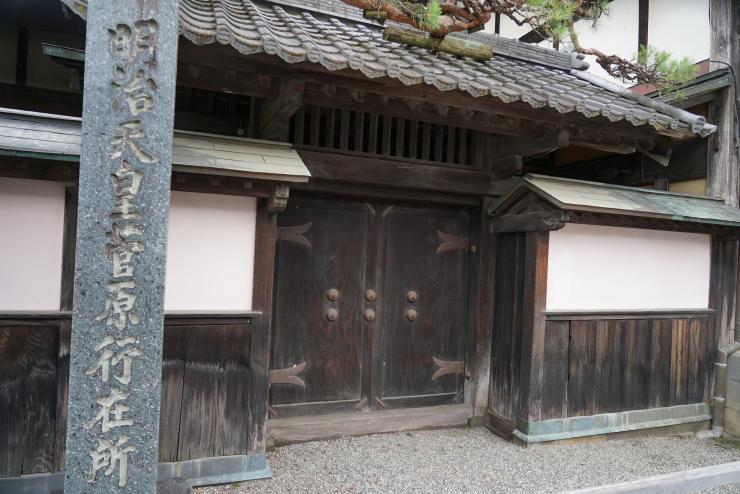
In 2017, the company won first prize in a sake competition held in Tokyo. Today, visitors can tour the Shichiken Brewery, go through the museum, and enjoy a sake tasting.
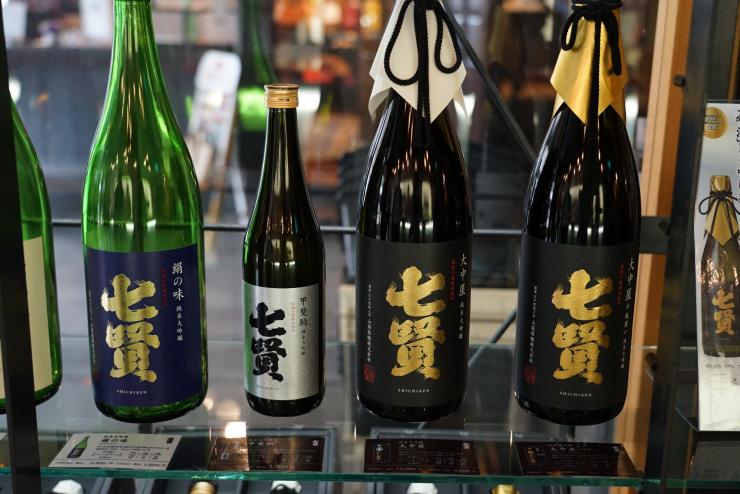
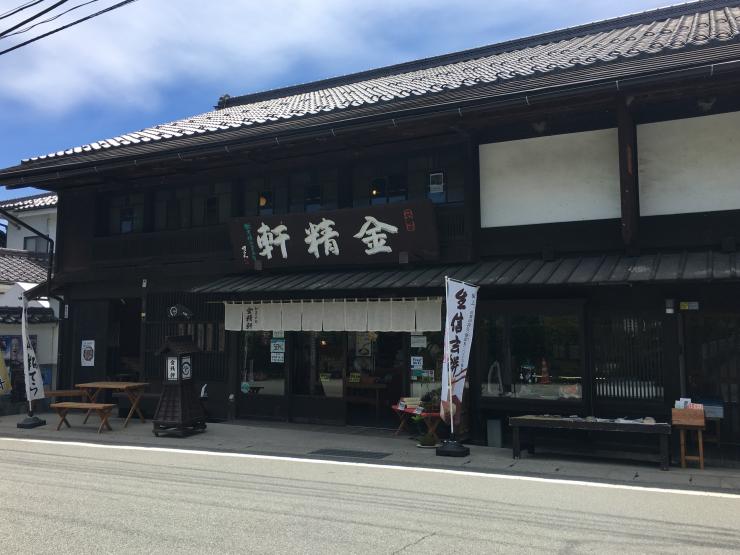
Kinseiken Daigahara Sweets Shop
The Kinseiken confectionary shop was first opened 1902 and is credited with inventing shingen mochi, today a popular sweet from Yamanashi.
While Kinseiken products are available at many souvenir shops across Japan, the Kinseiken Daigahara and Nirasaki shops are the only places where customers can try the fabled mizu shingen mochi, known as the Raindrop Cake in English.
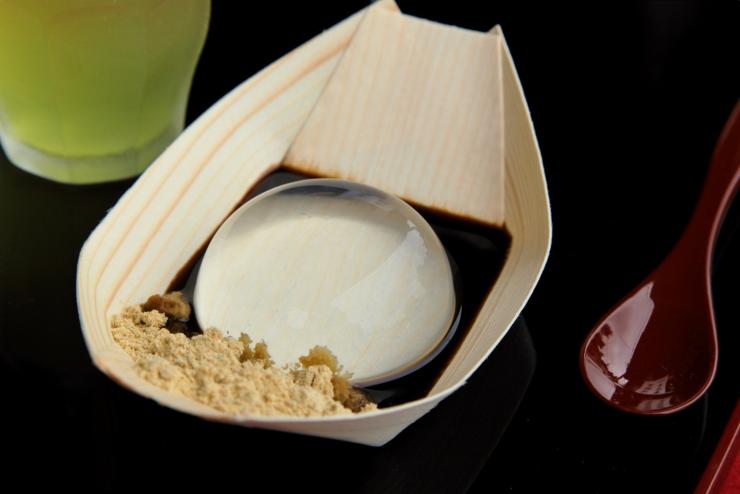
The CEO of Kinseiken, Ono Koichi, popularized the Raindrop Cake after tasting the spring water from Yamanashi’s mountains. The Raindrop Cake has garnered the attention of tourists both foreign and domestic and is only available during limited periods.
Ojiragawa Valley
Daigahara-Juku is located near the Ojiragawa Valley, now designated as part of a UNESCO Eco Park. The valley is part of the Minami Alps Biosphere Reserve and can be reached after a 10-minute drive from Daigahara-Juku. The valley is filled with granite that filters the water flowing out of the mountains. It is said that the waterfalls and rivers are so pure that visitors can drink the water straight from the source.
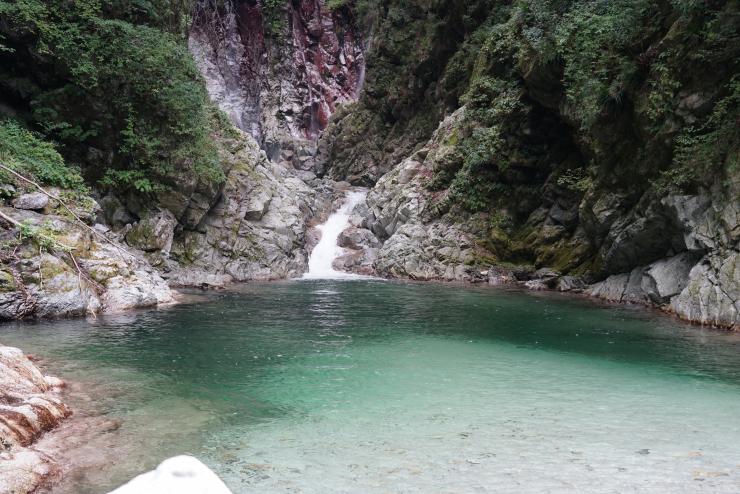
Restaurants and Accommodations
Daigahara-Juku has numerous cafes and restaurants, most of which offer dishes made with locally grown ingredients. While Daigahara-Juku is no longer a town filled with inns, there are many hotels in nearby Hokuto that offer accommodation.
Shichiken Brewery
Yamanashi’s abundance of pristine water makes it a prime location for breweries and major drink manufacturers. Among these is Shichiken (Seven Sages), one of the oldest sake breweries in Yamanashi Prefecture. Shichiken is a family business, owned and operated by generation upon generation of the Kitahara family since its founding in 1750.
With centuries of brewing expertise, Shichiken sake has won numerous first-prize awards in various sake competitions. The company’s sake is held in high regard across Japan.
Shichiken Origins
The company was founded in 1750 by Kitahara Nakaya Ihei, an experienced sake brewer from the Takato domain (in Shinshu, present-day Nagano Prefecture). He often traveled to Edo from Takato, and one night he stayed in Yamanashi. He tasted the local water and was convinced that it had a purity like no other in the country. Later, he began brewing sake in the Koshu area.
In 1835, fifth-generation master brewer Kitahara Ihei received a gift from Naito Yoriyasu, daimyo of the Takato domain: a pair of hand-crafted fanlight window frames with a portrait of the Seven Sages of the Bamboo Grove. As legend has it, these sages were learned men who drank wine and wrote poetry to help escape political tensions during the Three Kingdoms period in China (third century CE). Seven Sages of the Bamboo Grove is ‘Chikurin no Shichiken’ in Japanese—the origin of the brewery’s name.
Tradition of Innovation
In Japan, the alcohol industry is increasingly competitive. With beer, wine, and numerous spirits and liqueurs to choose from, consumers have far more choice than they did back in 1750. To stay ahead of the market, Shichiken must constantly adopt new brewing methods and innovate in their brewing practices.
Fortunately, their efforts paid off in 2017 when the company won first prize in a sake competition in Tokyo. Shichiken sake is held in high regard.
Purity of Yamanashi Water
The current 13th generation CEO is Kitahara Tsushima and the current brewmaster is Kitahara Ryogo. They will never divulge the details of Shichiken’s brewing methods. Kitahara Tsushima did admit, however, that the most important ingredient of Shichiken sake is the water.
Much of Yamanashi’s water is so pure that people can drink it straight from certain rivers and streams. “When you talk about wine making,” says Kitahara, “the best place to make wine is the place with the best grapes. However, with sake, the ratio of rice to water is roughly 20 percent rice to 80 percent water. Therefore, the best place to make sake is not the place with the best rice, but rather the place with the purest water.”
Water is an important resource and symbol in Yamanashi history and religious mythology, and that significance continues today.
Shichiken Tour and Sake Tasting
Visitors to Shichiken can take a tour of the brewing facilities and museum. Please make a reservation for the tour. During operating hours, visitors can participate in a sake tasting for a small fee. A gift shop sells Shichiken sake and other items made by the company.
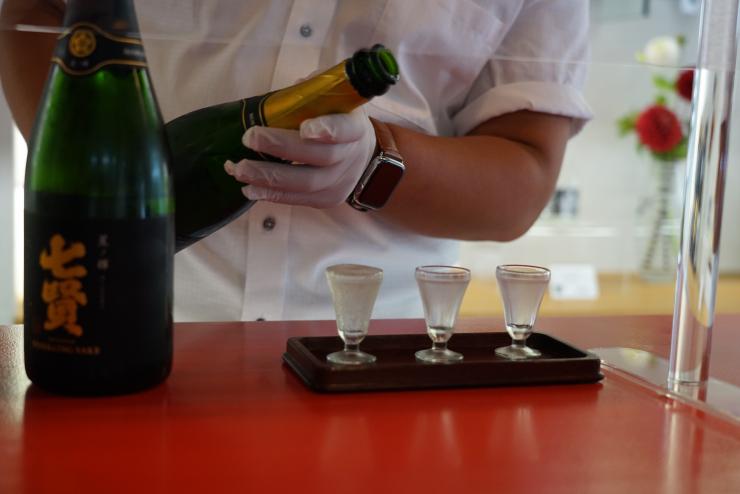
When Emperor Meiji Visited Shichiken
In 1880, the Emperor Meiji took a tour through the prefectures of Kyoto, Mie, and Yamanashi. Since Shichiken was built along the Koshu Kaido, one of Japan’s three major highways in the Edo period (1603–1867), it was a prime location for the emperor’s visit, and it was arranged that the emperor would stay at Shichiken for one night.
The accommodations for the emperor during an imperial visit, called an Anzaisho, were prepared by Kitahara Nobuyo, the 6th generation owner of Shichiken, The Yamanashi government supervised the construction of a bath, and a Western-style bed was brought in.
Imperial Visit
Emperor Meiji arrived at Shichiken on June 22, 1880 traveling with 300 guards, all of whom also stayed in Daigahara-Juku. The emperor and his inner circle stayed at the Anzaisho built by Kitahara. The majority of his entourage stayed at various inns in the area while performing their duties attending the emperor.
During the Meiji era, the emperor was still thought of as a god. Only Kitahara and his two children were permitted an audience. As a token of gratitude for Kitahara’s hospitality, the emperor gave the family two bolts of white silk and 50 yen as a gift. Back in 1880, 50 yen was the equivalent of approximately 1,000,000 yen ($10,000 USD) today.
After the emperor left, many residents around Shichiken lined up to receive a portion of the bath water the emperor had used the night before. It is even rumored that some people drank the water, believing it had some special power.
The Anzaisho
The Anzaisho was constructed entirely of wood, sourced mainly from Wakayama Prefecture. These days, most of Japan’s timber is imported from the United States, Canada, and Southeast Asia.
After the emperor departed through the Anzaisho front gate in 1880, it has not been opened again. In accordance with Japanese custom, no one has been permitted to stay in the chambers once occupied by the emperor. The Anzaisho at Shichiken is now a museum. Among the items on display are the chopsticks the emperor used during his stay, and the original fanlight window frames presented to Shichiken by the daimyo of Takato domain for the building in 1835, from which the brewery earned its name.
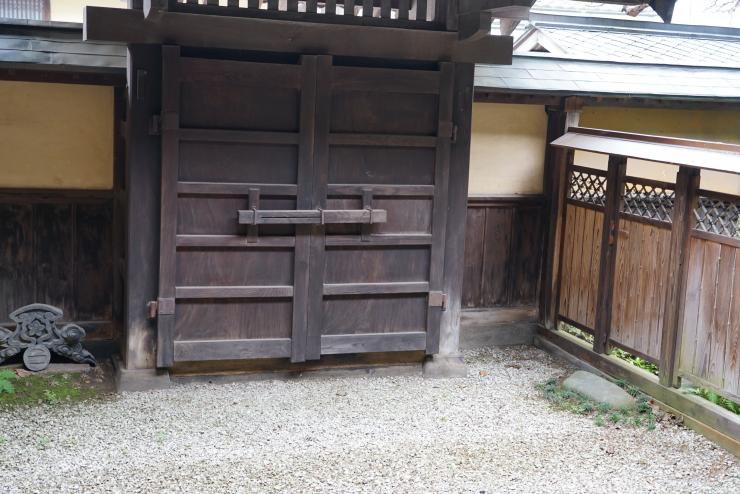
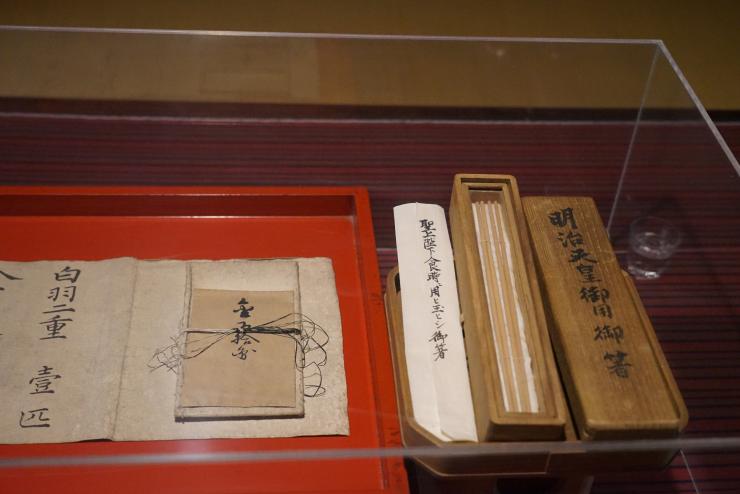
The Anzaisho is preserved as a cultural asset at the request of the Ministry of Education. The building has also been designated as a cultural heritage site by the Yamanashi government.
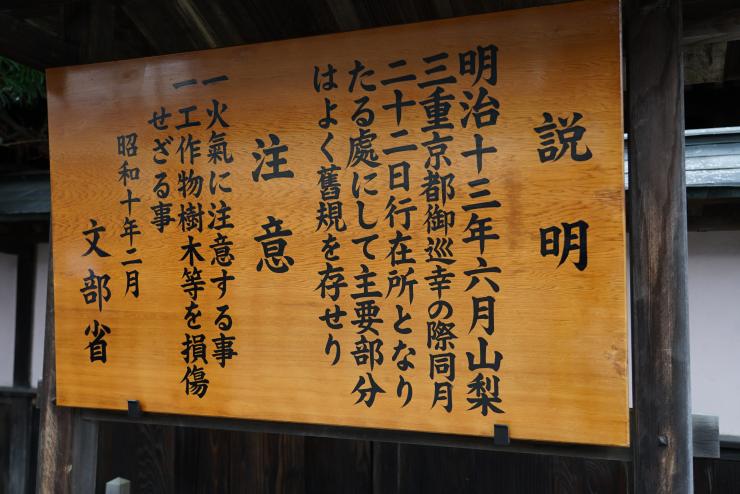
Kinseiken Daigahara Sweets Shop
Along the Koshu Kaido road in Daigahara-Juku is Kinseiken, a sweets shop that dates back more than a century.
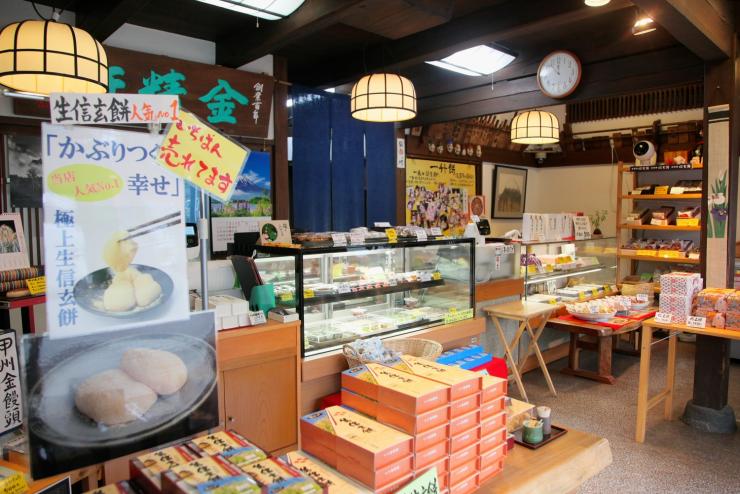
The Kinseiken Daigahara shop was opened in 1902 and operates in a building that was once an inn. The shop is famous for a number of traditional Japanese sweets made with fresh ingredients and innovative manufacturing processes. The company is known as the creator of shingen mochi, a soft confection made with rice flour that is often served with kuromitsu (black sugar syrup) and kinako (roasted soybean powder).
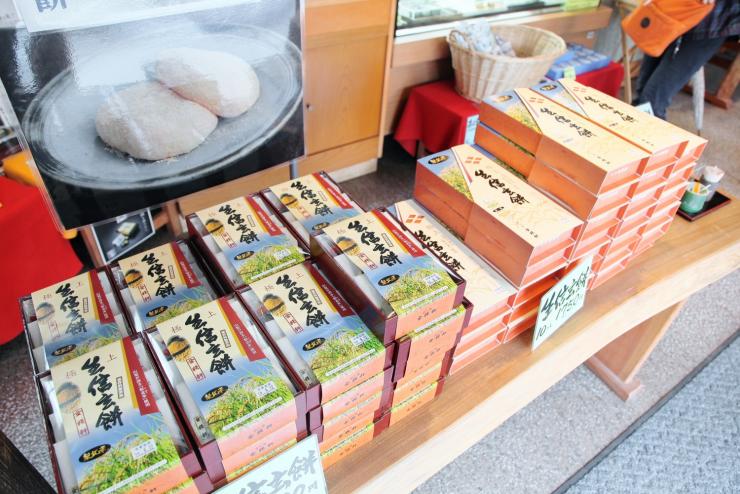
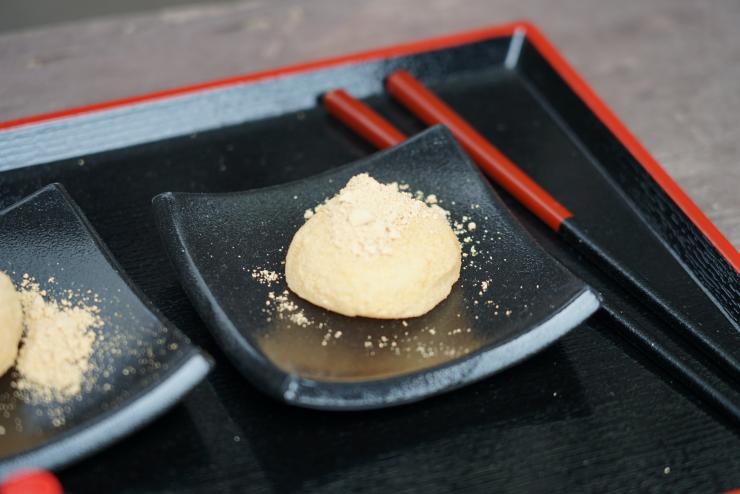
The company sells its products all over Japan. To serve a wide market while maintaining quality, Kinseiken uses a freezing technique called CAS (Cells Alive System). This system uses a magnetic field to minimize damage to food cells that occurs during normal freezing practices.
Raindrop Cake
The mizu shingen mochi, known as the Raindrop Cake in English, is a popular choice at Kinseiken. After tasting the pristine water of the Southern Minami Alps of Yamanashi, CEO Koichi Ono wished there was a way for people to experience the refreshing purity of Yamanashi’s water without having to climb a mountain.
He spent months testing and creating different products, until he finally discovered the Raindrop Cake, developed by a Kinseiken craftsman. This unique confectionary has only two ingredients—Yamanashi water and agar—and is served with kuromitsu (black sugar syrup) and kinako (roasted soybean powder).
The Raindrop Cake has become famous internationally. While others have tried to copy the recipe, the Daigahara Kinseiken and Nirasaki shops are the only places where customers can try the fabled mizu shingen mochi. Due to its fragile nature, the cake lasts only 30 minutes at room temperature before dissolving. The item is so popular that it normally sells out in the morning. Visitors must line up early and eat it quickly in order to have the experience of “eating” Yamanashi water.
Ojiragawa Valley
The Ojiragawa Valley is located in the foothills of the Minami Alps range in the municipality of Hokuto. It is a popular area for hiking and camping in Yamanashi. The valley is part of the Minami Alps UNESCO Eco Park. The Ojiragawa River flows through the valley; the source of the river is Mt. Kai Komagatake.
The Fuji River runs through the valley. It is one of the three most rapid rivers in Japan and one of the country’s most pristine water sources.
Origin of the River’s Name
The literal translation of "Ojiragawa" (尾白川) means "white tail river". The kanji for “O” at the beginning of Ojiragawa is 尾, which means tail. The kanji for “jira” is 白, or white.
There are two possible origins behind the river's name.
The first possible origin comes from Obi Gonzaburo's (1796–1819) name. He was the first person to climb the nearby Mt. Kai Komagatake. Obi is written 小尾, which includes the kanji for "tail" (尾). His name does hold historical significance. It is said that he was deified after climbing the mountain, and statues in his likeness can be seen on the Kuroto Ridge.
The second possible origin is from the legend of Prince Shotoku (574–622 CE), who is believed to have climbed the mountain riding a black horse with a white tail.
From this, a direct translation of the name would be the White Tail River.
The water of the river appears emerald green to the naked eye but is actually crystal clear. The green color is an optical illusion created by the whiteness of the pebble-covered riverbed and the reflection of the surrounding landscape. When viewed from different angles around the mountain, the color of the water appears to change.
Minami Alps and Mt. Kai Komagatake
The Minami Alps are Japan’s largest mountain range and were registered as a UNESCO Eco Park in 2014. Mt. Kai Komagatake, which is 2,967 meters high and supports a wide range of plant life and wildlife, is highly prized for its environmental, economic, and religious legacy.
The plentiful waters flowing through the mountains sustain numerous species of flora and fauna, including wild strawberries, alpine flowers, the Japanese serow (a type of antelope), and grouse. Bears are also spotted on the mountain from time to time, so it is best to climb with a trained guide.
Mountain Worship
There are still religious groups in Japan that practice traditions of worship for certain mountains. Followers of the religious association called Komagatake Ko worship the mountain by reciting a sutra while climbing to the summit. Near the top of the mountain, members of the group, dressed in white robes, perform ritual dances.
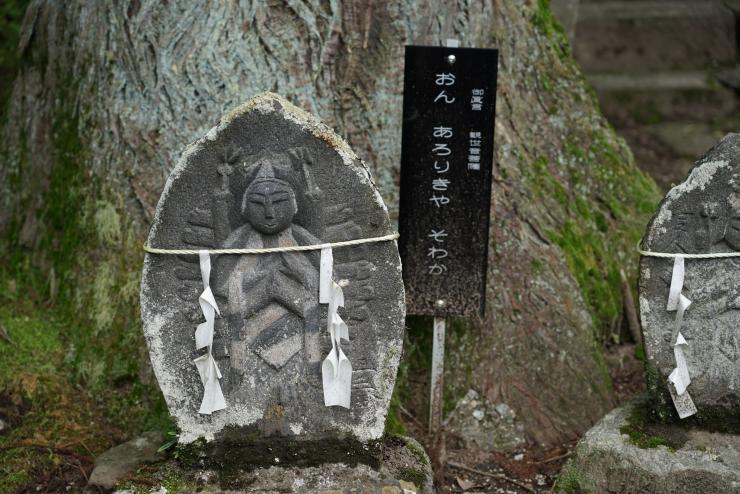
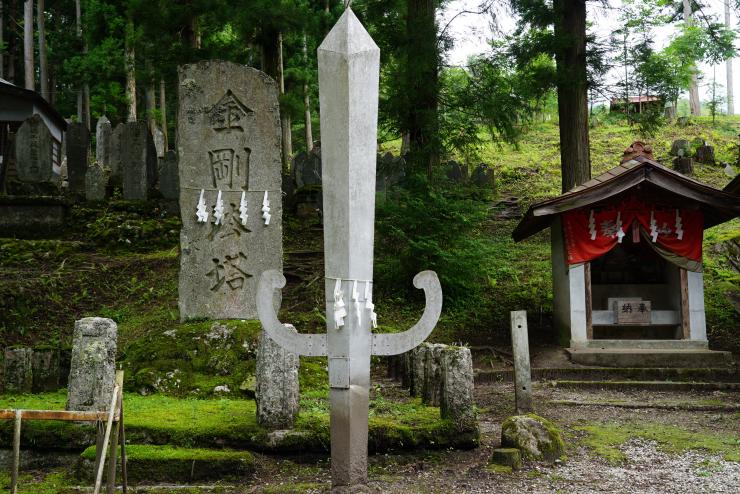
Geology and Freshwater
The Ojiragawa River’s purity can be attributed to the granite rock of Mt. Kai Komagatake. Granite serves as a natural filter for the water that passes through the mountain. In fact, some of the streams in the Ojiragawa Valley carry rainwater that has been passing through the natural filters of the mountain for about 20 years.
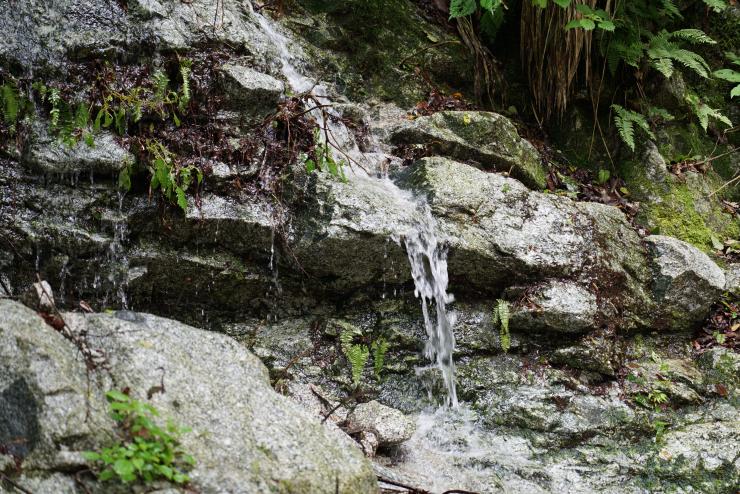
Economic Value
The water of Ojiragawa Valley has a direct impact on the Yamanashi economy. The water from Mt. Kai Komagatake feeds the Ojiragawa River, which flows into the Hakushu area of Hokuto. Hakushu water is used by large beverage companies to make sake and whisky. Major beverage companies such as Suntory, Coca-Cola, and Shichiken have factories in Yamanashi because of the purity of the water.
Published on
- April 14, 2022
Share
-
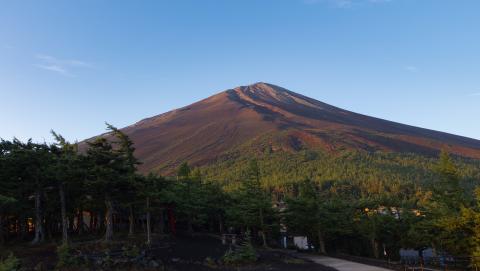
Fuji Subaru Line 5th Station & Mt. Fuji Travel Guide
March 3, 2025
Home of Mt. Fuji > Staff Journal > Hakushu Water and Daigahara-Juku
